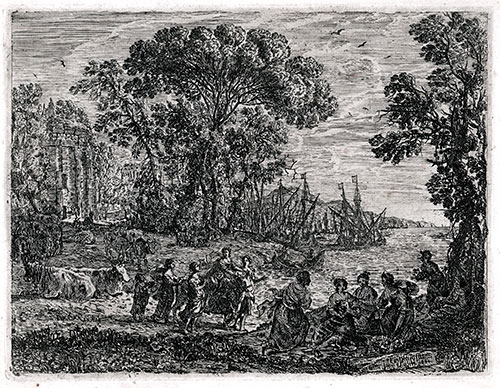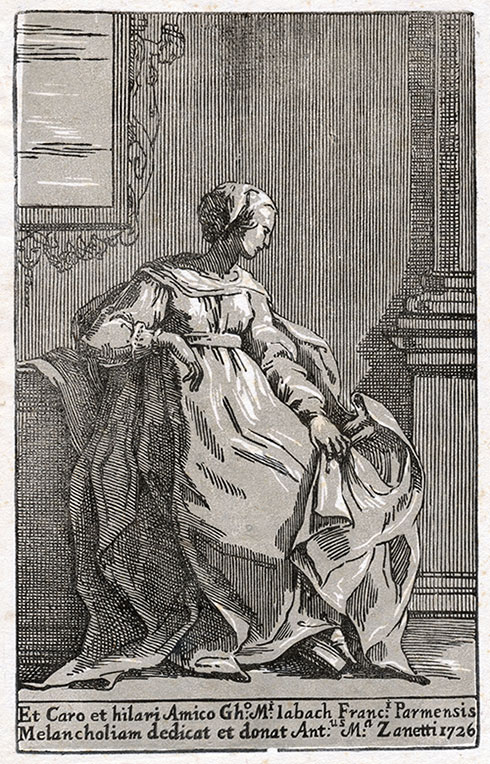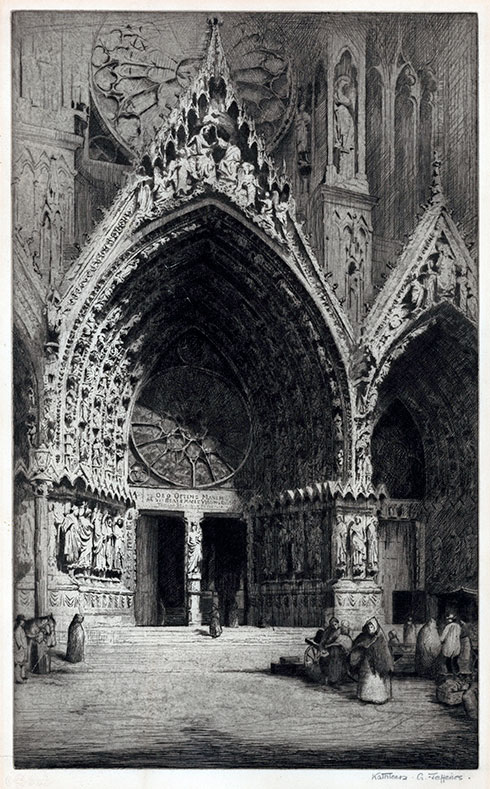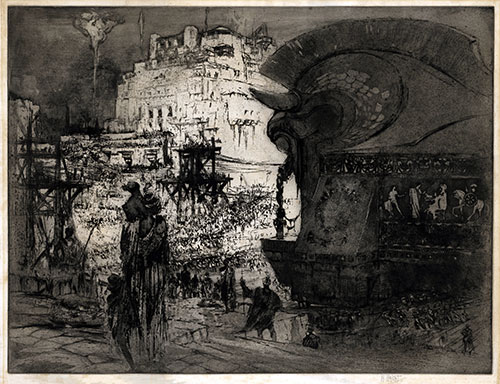The
Home Page Selection
If
you require further information on any
print featured here, please contact
us.
When
a print has been sold it will be marked
as Sold.
A
growing archive of selections
from previous Home pages is featured in
the
Home
Page Selection Archive |
|
See
also :
Click
on a thumbnail (left)
to link directly with the entry for that
print, or scroll down to view all the selected
prints from the current Home
Page.
Images
are not to relative scale (see stated dimensions) and also at only modest resolution.
If you wish to view extracts of an image at higher resolution, please Contact us.
|
|
|
|

| |
CLAUDE Gellée le LORRAIN
Chamagne, Duchy of Lorrain 1600 – 1682 Rome
Aged twelve Claude was taken into the household
of the Roman painter Agostino Tassi, as a pastry cook,
but instead became Tassi’s studio assistant.
He returned to Lorrain for a period to work with the court
painter Claude Deruet, a friend of Jacques Callot and the
latter possibly was the instigator of Claude’s interest in etching,
which he took up after his permanent return to Rome in 1627.
Claude’s reputation, for atmospheric, poetic, classical
interpretations of the landscape of the Roman Campagna,
was established in the 1630’s.
L’Enlèvement d’Europe
The Rape of Europa
Manocci 14 iii/vii
201 x 264 mm
Original etching, 1634.
The plate signed and dated.
Third state of seven, with the plate corners rounded
and the vice mark in the left plate border.
An early 18th century impression, on laid paper with part
of a spread eagle watermark.
£1650
Europa in Greek mythology was the daughter of the King of Tyre.
Jupiter fell for her and disguised as a bull came to where she
and her attendants were enjoying an afternoon by the seashore.
Charmed by the bull’s apparent good nature Europa garlanded
his horns with flowers and climbed on his back, at which
he promptly carried her off.
Return to top ^ |
|
|
|

|
|
Count ANTONIO MARIA ZANETTI the Elder
Venice 1680 -1767 Venice
A connoisseur, collector and insurance agent, Zanetti was central
to the 18th century revival of chiaroscuro woodcuts.
On a visit to London in 1721 he bought a collection of 130 drawings
by Parmigianino and Raphael, which had belonged to the Duke
Arundel; and in the collection of the Duke of Devonshire discovered
16th century chiaroscuro woodcuts, many of which, coincidentally, had
been made after drawings by Parmigianino and Raphael.
On his return to Venice he began to experiment with cutting
chiaroscuro blocks himself, made after the drawings he had bought
in London. In the 1730’s he issued thirty-nine of his prints as a set,
and in 1749 re-issued them with a further thirty additional examples
of his work.
Melancholia
Bartsch 28
169 x 105 mm
Chiaroscuro woodcut from two blocks, 1726.
‘Signed’, dated, entitled
and dedicated in the lettering at the foot.
After Parmigianino.
Printed in black and grey on laid paper with a partial watermark.
Narrow margins with a small thin patch in the left margin verso.
£1000
Return to top ^ |
|
|
|
 |
|
KATHLEEN G JEFFERIES
Westbury on Trym, Bristol 1886 – 1970 Hampstead
A landscape painter and etcher, her etchings were largely produced before 1920, while she was living in Bristol and working as a music teacher.
Bristol had a strong etching tradition at this period and Kathleen’s younger sister Hilda was also an etcher.
Kathleen signed her etchings with her maiden name, Jefferies. Though christened Katherine, she was known as Kathleen and signed herself as such.
After her marriage to Archibald Philip Hartnell, she settled in London in 1920
and studied painting at the Slade. Her paintings are signed with her married name, Hartnell.
Later she became a music teacher.
Reims Cathedral, West Front
399 x 244 mm
Original etching printed with plate tone.
Signed in pencil.
With the blindstamp of the Printsellers Association.
On F J Head cream laid paper.
A couple of slight surface scratches.
£100
Return
to top ^ |
|
|
|
 |
|
WILLIAM WALCOT R.E., Hon R.I.B.A.
Odessa 1874 – Ditchling 1943
Walcot trained as an architect but did not practice after he settled
in England, though he worked as a perspectivist for other architects
and architecture was the main subject of his paintings and etchings.
He had no formal training as an etcher but was a friend of Frank
Brangwyn, from his arrival in London in 1906.
A painterly etcher, Walcot was only concerned with the final effect
of the plate, employing an impressionistic approach to truth to the
spirit of the scene.
Rome particularly captured Walcot’s imagination.
He spent a considerable time in the city, and had a studio in the
British School at Rome.
When he saw ancient Roman ruins he envisaged them for his etchings
and watercolours in their original imperial splendour, in the same way he created
watercolour contemporary perspectives for Lutyens and other leading
architects.
Walcot saturated himself in classical literary sources, Pliny the Younger’s
Letters, Virgil etc.
Marius Ivor wrote in the Introduction to the catalogue for Walcot’s 1918 exhibition at James Connell & Sons,
“Archaeology is history; art is experience, and must always have reference to the modernity of the past”.
Walcot’s family recalling his vivid imagination commented that he believed himself a reincarnation from Classical times.
The Trojan Horse - Virgils’ Aeneid
II
Dickins 20, EH-L 35
629 x 825 mm
Original etching with aquatint, 1914.
Signed in pencil.
Published by H C Dickins 1914.
The edition was intended to be 35 but only 29 impressions were printed.
On stout wove paper, a little time-stained.
Special offer £425
Exhibited at the Royal Academy 1914.
Return
to top ^
|
|
|
|
|
|
|
|